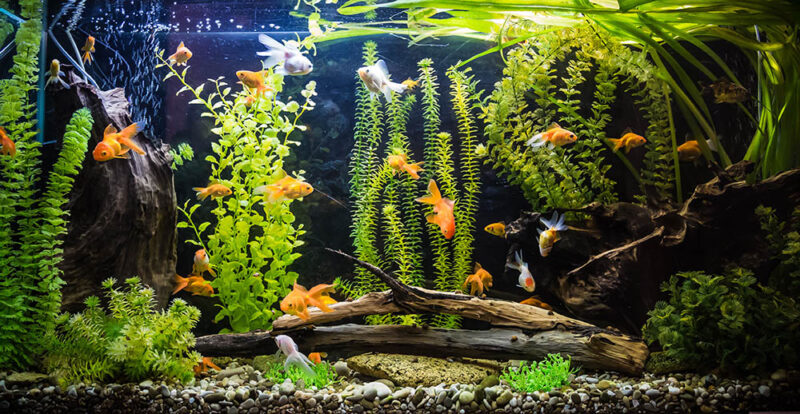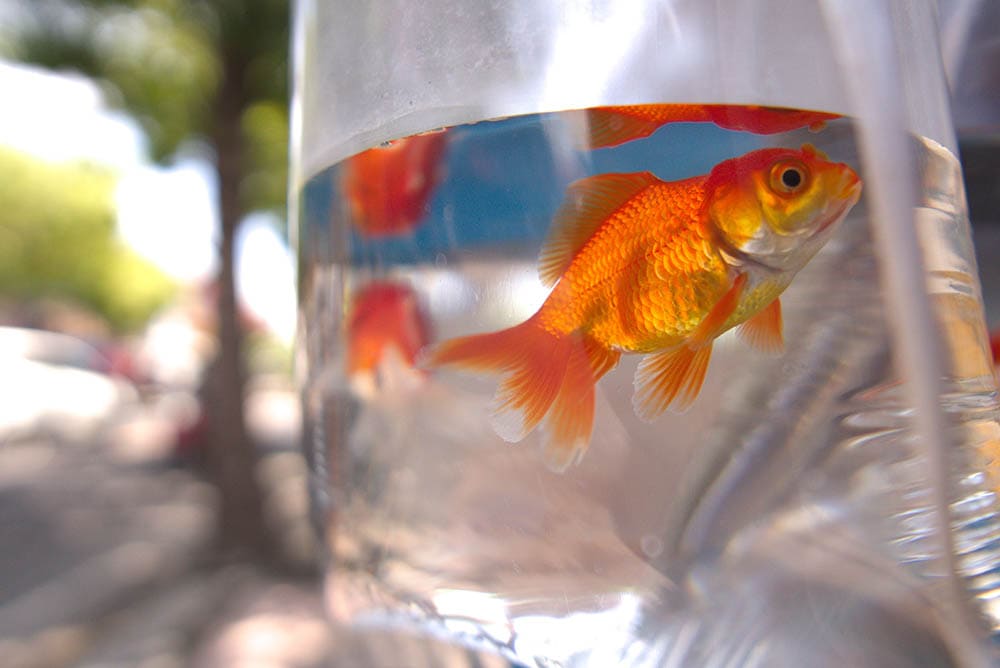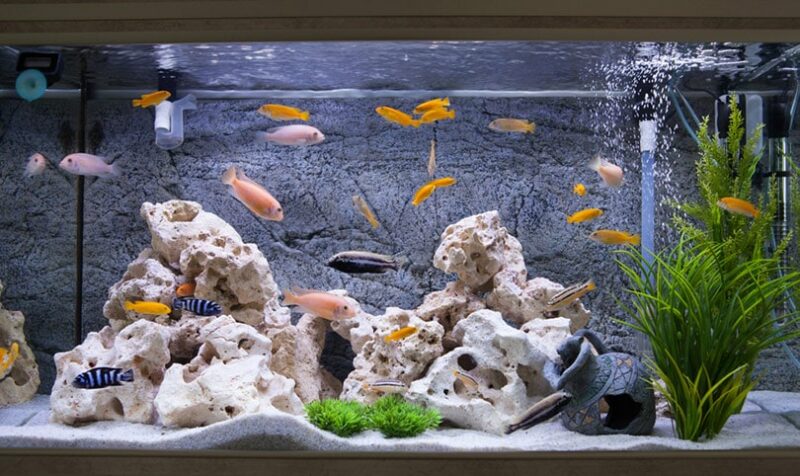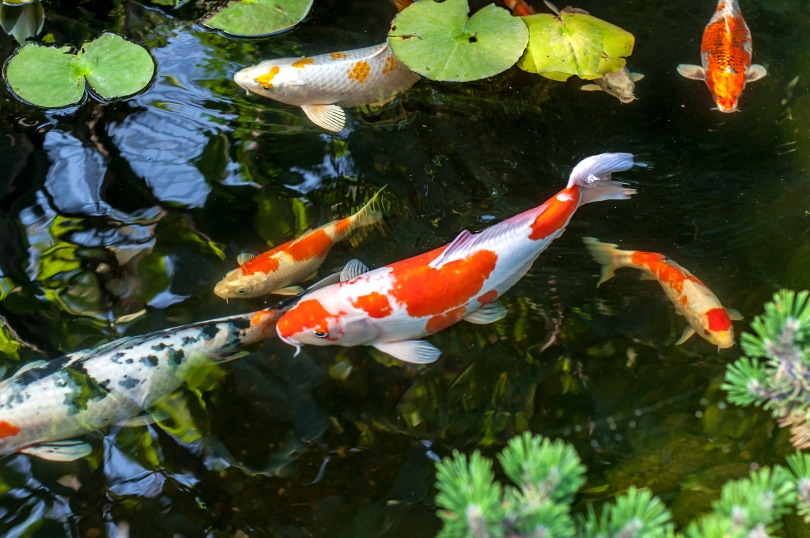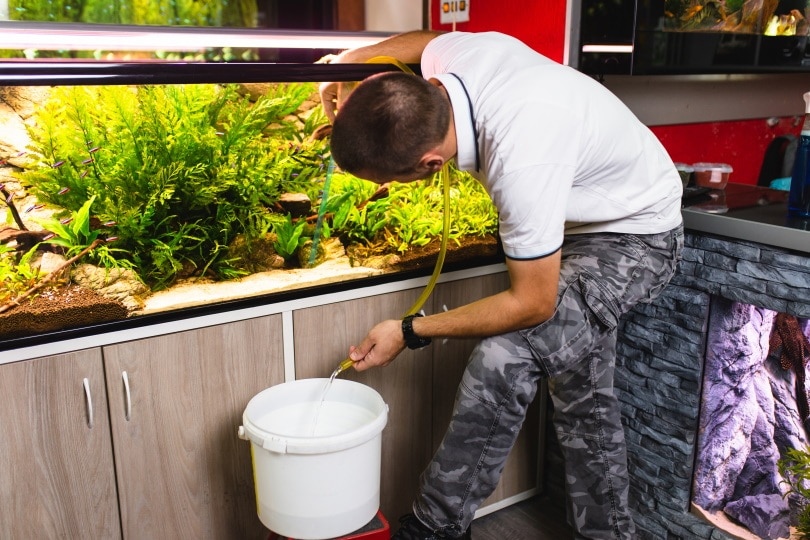
Aquarium gravel is widely used in most aquariums to not only add visual beauty to the bottom of an aquarium, but also to hold live plants and host an abundance of beneficial bacteria that helps to keep the water quality good.
However, having gravel in your aquarium means that you will need to spend extra time maintaining it to ensure that it is kept clean. Aquarium gravel can trap a lot of dirt, fish poop, and gunk from the aquarium which can start to affect the water quality if it is not cleaned properly.
Fortunately, it is simple to keep your aquarium gravel clean, and this guide will give you all the info you need to help you find a quick and easy method to clean your aquariums gravel.
What Is The Purpose Of Aquarium Gravel?
Aquarium gravel offers a great aesthetic to your aquarium and a place for you to plant and grow live aquarium plants by providing the plant’s roots with a safe and secure growing environment. Unlike sand, aquarium gravel is quite heavy and does not clog filters easily or get stirred up and cloud the water when some of the substrates are moved, which is what makes it such a popular substrate choice for most aquariums.
Aside from being a great growing substrate for plants, aquarium gravel comes in a variety of different colors and size options which gives you as the aquarist a range of different gravel choices to choose from to suit your aquarium.
Aquarium gravel also provides beneficial bacteria with a space to grow aside from the filter media. This is important for the overall balance of the aquarium which helps to process the fish waste, uneaten fish waste, and any debris that enters the aquarium.
Housing a goldfish isn't as simple as buying a bowl. If you're a new or experienced goldfish keeper who wants to get the setup right for your goldfish family, check out the best-selling book, The Truth About Goldfish, on Amazon.
It covers all you need to know about the ideal tank setup, tank size, substrate, ornaments, plants, and so much more!
Why Does Gravel In An Aquarium Need To Be Cleaned?
Since aquarium gravel lays at the bottom of the aquarium, lots of fish waste and large debris can get trapped between the layers of the substrate. Over time, this leftover waste can rot and decompose in the aquarium and in return affect the quality of the water. This makes it important to ensure that you clean the gravel when you do your monthly or weekly aquarium maintenance.
If your aquarium is exposed to high lighting, then it is also possible for algae to grow within the gravel which can make the gravel look unappealing.
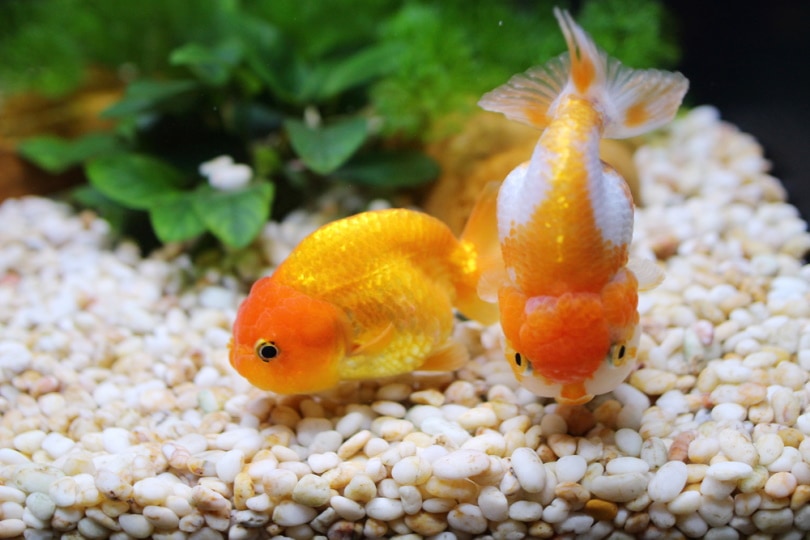
How To Clean New Aquarium Gravel?
New aquarium gravel is quite dusty and can cloud up the water if it has not been rinsed properly before being placed in the aquarium. This makes it important to rinse the gravel first.
Following these steps will help to prevent new aquarium gravel from clouding up the water and causing it to become murky or clog the filter with loose dust particles.
How To Clean Gravel In An Aquarium?
Once gravel has already been placed in an established aquarium, you will need to use aquarium equipment such as a siphon or gravel vacuum to suck up debris and gunk that is trapped in the substrate.
Once the aquarium has been filled and plants have been placed in the substrate, then it is unnecessary to remove all the gravel to clean it separately. The best method to follow is to run a gravel vacuum through the substrate to stir up the trapped dirt and it will then be sucked up through this aquarium equipment and disposed of in a bucket with any old water.
Some gravel vacuums will come with mesh blockers so that the substrate does not get sucked up along with the dirt which makes it easier to clean the gravel—although some forms of gravel are too heavy to be sucked up in a gravel vacuum.
You can also run a net through the substrate to allow the trapped debris to float around and be released from the substrate and then sucked up through the gravel vacuum in the water column.

Final Thoughts
Once you have the right tools for cleaning aquarium gravel and you take the time to prepare the gravel before placing it in the aquarium to help prevent any potential clouding from the dust particles, it is a simple process to keep your aquariums gravel clean and free from trapped dirt.
Gravel generally only must be cleaned once a month, as most aquariums (especially larger ones) will not get dirty too quickly so cleaning the gravel in an aquarium should not be a weekly problem.
Featured Image Credit: hedgehog94, Shutterstock




